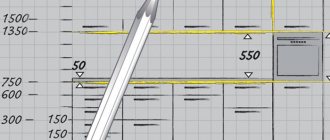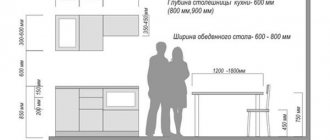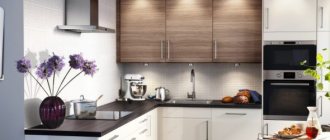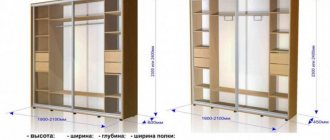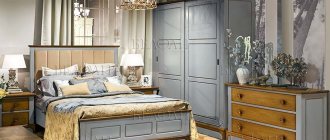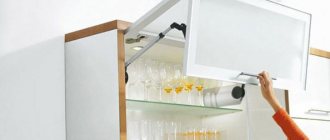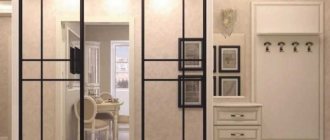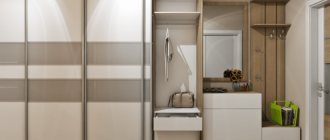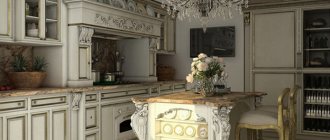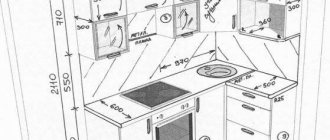Useful accessories for washing
Many sink manufacturers offer useful additions to their products. Cutting boards, plastic and metal baskets for washing fruits and vegetables, dish drainers, collander (colander), dispenser (food waste grinder).
- Plastic, wooden and even glass cutting boards, as a rule, are located along the contour of the sink, bowl or drain and allow efficient use of free space.
- Baskets are used for drying vegetables and dishes, and also protect the sink from damage.
- A collander, made of plastic or stainless steel, follows the shape of a bowl and has many holes, thereby resembling a colander. It is convenient for washing fruits and vegetables, defrosting meat, rinsing and drying salad.
- Additionally, the sink can be equipped with an automatic valve - a plug on the drain, controlled by a rotating wheel. This wheel can be installed near the mixer or closer to the edge, right under the hostess’s hand. The need for such a device is debatable, but it’s still nice to open the drain with a light movement without putting your arms up to your elbows in the water.
- Another convenient built-in accessory, a soap dispenser, can make life much easier for the housewife. It is installed motionlessly on the surface of the sink and has a container filled with liquid, allowing you to avoid taking up space with various containers.
Instagram @tanya_berestova
Franke
Kitchen cabinet with drawers
To somehow diversify the interior of the room, you can choose one or more kitchen cabinets with drawers. A cabinet with drawers is usually located either next to the stove or next to the sink.
Then they will be at hand and you won’t need to open the door again. Typically, cutlery and other small items are stored in drawers of different sizes.
Furniture
The set of furniture required for a corner kitchen is practically no different from that for a regular single-wall kitchen. Just like in a regular catering unit, you need cabinets and cabinets with drawers, in the right quantity.
You will also need a panel for the hood, a stand for the oven and hob, a cabinet for drying and storing dishes, and a cabinet under the sink (it is better to use a corner option). You may want to add a pencil case and a bar counter and 1-3 bar stools.
Don't forget to leave space for the dishwasher, trash can, and refrigerator. Optionally, you can order a dining table and chairs for it. This should only be done if the table will be in close proximity to the kitchen.
Fridge
Choosing a refrigerator for the kitchen is a rather controversial thing. On the one hand, it must be combined with the entire kitchen, and on the other, the refrigerators are so large that they form their own subspace with their own style.
One way or another, the “matte metallic” color, standard for many brands of refrigerators, will not contradict almost any interior. If you still want to subordinate the refrigerator to the overall style, choose a built-in model, because it can be “covered” with the panels that are interesting to you.
Table
The dining table, if it is located next to the kitchen, simply must obey the general style. It is better if it is made of the same materials or in the same tone as the main furniture in the kitchen. This also applies to chairs.
Calculate the size of the table according to the size of the kitchen and the number of family members. Remember that for a comfortable seat, everyone will need at least 80 centimeters in width, as well as a meter “behind their back” so as not to interfere with movement.
Sofa
A small kitchen sofa is suitable for small and medium-sized kitchens with small families. Then you can break the rule “table and kitchen in the same style,” because the sofa and table form an independent area.
This, of course, does not mean that you need to combine incompatible things, but you can allow yourself some freedom. Choose a sofa first and then a table. The table must match the width and height of the sofa so that it is comfortable to sit on. The surface of the table should be slightly lighter than the surface of the sofa.
Doors
The cabinet doors under the sink can be hinged or sliding.
The advantage of the former is fault tolerance. Guides and rollers for sliding doors quickly become overgrown with splashes of soap, detergents, and limescale and provide noticeable resistance when trying to open them.
Hinged doors
The downside to the reliability of swing doors is the space required to open them. In a cramped bathroom or typical Khrushchev kitchen with an area of 4-5 square meters, the ability to get to the contents of the cabinet without moving to the side will not be superfluous.
A laundry basket built into a closet or cabinet is often made retractable. For its installation, a ready-made set of fittings is used, consisting of horizontal guides and rollers. The retractable part of the facade is equipped with an overhead or mortise handle.
Cabinet with pull-out baskets
Review of manufacturers
Ready-made floor-mounted sink cabinets are available from many manufacturers. There is a choice from global and domestic brands, economy class options and luxury furniture. It is worth taking a closer look at some of the manufacturers.
The Swedish concern IKEA is rightfully one of the most popular in the world. His kitchen furniture is manufactured according to the frameless principle of forming facades - only high-quality MDF is used for them. A sink cabinet in various monotonous colors - gray, white, beige, light purple - in combination with the rest of the set will look organically in a single monolithic image. The furniture covering is made of environmentally friendly veneer, which is easy to clean and not subject to harmful influences.
Another great feature of IKEA sink cabinets is the pull-out system, which allows the doors and drawers to open and close completely in one motion. The facades are fastened with dowels and ties, the structures are as strong as possible. All furniture is presented on plastic legs that can withstand loads of up to 120 kg. Various models allow them to be used even in the smallest kitchens.
There are currently 4 main IKEA kitchen lines:
- youth;
- Provence;
- modern style;
- Scandinavian style.
The combination of reliability and fashionable style is familiar to many who have never even purchased products from this Swedish manufacturer.
Leroy Merlin kitchen furniture is represented by economy class items; despite the relatively low cost, you can purchase very stylish and original models. There is a choice of bedside tables made of chipboard with laminate or plastic finishing, or more expensive options made of MDF with PVC finishing and natural wood textures.
Sets from Leroy Merlin of the DELINIA model range have framed facades with arrays of natural veneer made in China. Several design styles are presented, including: classic, modern, Provence. The colors of furniture from this manufacturer are light and dark brown for various types of wood, as well as various youth colors: green, orange, silver and others.
The Italian brand Zetta has extensive experience in creating high-quality kitchen furniture. The manufacturer is famous for its stylish headsets, which are made from environmentally friendly materials using advanced global technologies.
Kitchen bedside tables, like other pieces of furniture, are made from several materials:
- laminated chipboard of various textures and colors;
- MDF 19 and 22 mm;
- massifs of ash, oak, linden, birch.
The facades and doors of kitchen units are finished with enamel, acrylic, PVC, and plastic. Natural veneer from various types of wood and eco-veneer imitating real wood are used. Furniture facades are framed using stainless steel and aluminum. There are door options with inserts made of tempered shaped and painted glass.
Zetta sink cabinets will be reliable and stylish; you can choose from different designs and styles: cozy Provence, modern classic, modern. Color solutions can be very diverse - from cozy dark wood textures to bright youth colors. Furniture is produced both according to classic Italian canons and designed according to individual orders.
Stolplit is a domestic manufacturer that has long been famous for its original and affordable kitchen sets. High-quality materials are used in production: natural veneer and eco-veneer, laminated chipboard, MDF. You can choose models from different color ranges; many design options are available, both ready-made sets and individual cabinets for various sizes.
Stolplit kitchen furniture is durable and easy to maintain at very reasonable prices, which are affordable for any family. It is possible to choose interior items to suit every taste. The manufacturer produces sets with hinged doors and framed facades; it is possible to order cabinet furniture according to individual projects.
ZOV kitchens are loved by many domestic buyers for their stylish appearance and ease of care at relatively low prices. Today it is possible to order various sink cabinets made of MDF and chipboard that will last for many years. At the same time, the finishing and materials are of high quality and harmless.
Corner
Kitchen sinks with a corner cabinet are chosen quite often. This allows you to occupy space in the room that is not often used for any purpose. They can be made from pine, chipboard, plastic or other materials. Features of corner structures include:
- they can be L-shaped or trapezoidal, and it is the first option that is purchased most often, since it is considered quite simple, but if a stainless steel sink with unusual and specific shapes is used, then the second model is suitable;
- corner types are considered more ergonomic compared to straight options, and they fit even into the smallest rooms, and also look good in combination with different types of kitchen units;
- they are practical and convenient to use, since when opening the door it is possible to view the entire space of the drawer;
- a corner vanity unit can have different strengths, which depend on the material used in its manufacturing process;
- these elements are considered more expensive compared to direct models.
Thus, corner contractions can be made of pine or other materials, and this table can also have different configurations and sizes, which allows you to choose the right model for any kitchen.
Cabinet options for kitchen sinks
Manufacturers of vanity cabinets offer models of various configurations, so that each of them fits a specific corner in the room. Let's focus on two universal types.
Straight
The first option is to build a classic plan in the shape of a rectangle or square. Its simple configuration fits anywhere in the headset, but is not suitable for a corner location. Most manufacturers try to equip their models with functional elements, including kitchen rails and stationary shelves. Furniture can have different dimensions, and the number of doors used in the design is directly related to the volume of the cabinet. If desired, a washing machine can easily fit under the sink.
The number of components corresponds to the supplied sewerage and water supply systems. Hidden eyeliner is an assistant in installing and operating functionality.
Such a device is absent in old apartments, which often provokes a significant reduction in space for additional accessories. The optimal solution is to have a small pull-out top drawer for storing food and washing equipment in close proximity to the sink.
Angular
This location option is popular for miniature kitchens. Thanks to its triangular shape, it requires a minimum usable area of the room, which is important for small-sized apartments. But a corner kitchen cabinet has a significant drawback - to rationally use its internal space, it is necessary to install “carousel” type drawers. The “locomotive” system is interesting to use. In it, a retractable shelf pulls the next one from the depths of the cabinet.
A corner option with one door with a beveled front edge is very popular. Thanks to this transformation, the size of the space is made larger without interfering with direct contact with the sink. This model is practical, roomy, but is massive and more expensive. It will fit perfectly into a kitchen with 2 sinks.
It is important to note the ways of arranging cabinets for sinks:
- With two doors - the most common type for use with furniture of any configuration.
- On the one hand – for models of small dimensions. This is inconvenient for large cabinets.
- With double hinged door. Optimal for corner furniture.
- Sliding type is an excellent technique for small-sized models. True, the convenience is not the maximum.
- With drawers - for straight furniture. The main thing is not to forget about the recesses for pipes and hidden parts of the sink.
Under the sink it is also possible to be completely empty - just hidden parts of the washbasin and pipes. But more often there are drawers, shelves, baskets, and a small organizer on the closet door itself. It is no secret that the space can be used for a filtration mechanism, the location of heaters or trays for storing accessories.
Kitchen sink cabinet dimensions
A kitchen cabinet with a sink should not exceed the height of the other parts of the kitchen set, since they are all combined and covered with a common surface.
In proportion to the size of the washbasins, sometimes even two consecutive ones, the height of the furniture is also selected. The design of doors for a wide cabinet should include two hinged doors. Narrow sinks (30-40 cm) usually have only one door. Two-door wide cabinets accommodate larger ones - 60-80cm.
The height of such cabinets should not be less than half a meter. This does not require you to lean over the sink. By individual order, you can adjust the dimensions of the cabinet for the kitchen sink and choose the most convenient one for your height. But it is necessary to take into account that there must be a significant distance between wall and floor cabinets.
Varieties
On the construction market you can find several types of sink cabinets. All existing models differ in size and shape. Different materials are used for their manufacture.
Economy class products are considered the most popular
When choosing such models, you need to pay attention to strength and durability, material of manufacture, and resistance to moisture. It is better to give preference to furniture from well-known manufacturers
There are several options for kitchen sink cabinets:
- Square or rectangular models. The main disadvantage of straight cabinets is that they cannot be installed in the corner of the room. Furniture is selected according to the dimensions of the sink. The most popular sizes are 50x50; 50x60; 60x60, as well as 60x80 cm. The furniture is equipped with drawers and additional shelves, which are used for storing dishes and household chemicals. Here you can arrange a compartment for vegetables and fruits.
- A corner cabinet for a kitchen sink leans against the wall and countertop in the corner of the room. The side walls are placed at right angles to each other. Such models allow you to save useful space in small kitchens. The shape of the stand can be very varied: triangular, rectangular or L-shaped.
- Trapezoidal cabinets are considered the most spacious. This furniture has several doors. The interior space of the headset is divided into several compartments, which are used to store large items and small items. Trapezoidal models of sink stands are large in size.
- Multifaceted kitchen furniture is made to order. Such cabinets have different shapes, but the most popular among users are asymmetrical models that can decorate any interior.
The dimensions of the sink module depend on the size of other furniture and the area of the kitchen. The standard width of the product is 50, 60 or 80 cm, depth - 60 cm. When selecting a surface-mounted sink and an underframe, you must ensure that these elements fit well with each other - the sink must fit into the cabinet.
Direct
Corner and straight models of bedside tables are popular among consumers. The main advantages of direct structures are:
- Large assortment of furniture of different sizes. Such products have several doors and drawers.
- Straight cabinets can use various additional mechanisms and decorative elements that increase comfort and improve the appearance of the product. Such parts include wheels, rails, drawers.
- Ease of use and practicality. You can store many different items here.
- The cabinet is reliable and durable.
- Minimum cost.
Pine products are considered the cheapest. Such material must be impregnated with antiseptics and other compounds that increase the product’s resistance to moisture.
Corner
The corner kitchen table under the sink is ideal for placement in small spaces. This piece of furniture helps to rationally distribute free space. Products are made from plastic, chipboard, and solid wood. This design differs from the previous version in the following ways:
- Trapezoidal or L-shape. The latter cabinets are most often used for a metal sink with a protective stainless steel coating. Cabinets with trapezoidal dimensions are used for sinks of a specific shape.
- They fit well into the design of a small kitchen. Such products look great against the backdrop of different kitchen sets; they are more ergonomic than direct options.
- Corner cabinets are considered more practical to use.
- Such models have different technical characteristics (strength and durability). This depends on the type of material used.
- The cost of these elements is much higher than that of direct models made from other materials.
Size of corner cabinet for kitchen sink
Probably the most popular size of a sink cabinet is 900 by 900 mm. This cabinet has quite acceptable capacity and high stability.
This size includes two types of cabinets:
- Cabinet with external side walls of 520 mm, internal walls of 450 mm and a hexagonal module bottom. The frame of such a cabinet does not have a back wall to facilitate the passage of communications. There is no shelf in this cabinet.
- A cabinet with external side walls of 520 mm, and internal walls of 838 and 854 mm, with a pentagonal bottom. The resulting module is larger than in the first case and, accordingly, more functional. But you will have to make a cutout for the water supply.
As for the kitchen facade, on such cabinets it is installed with one hinged one. A pull-out basket cannot be installed.
Standard dimensions of the simplest corner cabinet for a kitchen sink
There is another option, the dimensions are the same - 900 by 900 mm, but the design has two doors. You can make it so that two facades open simultaneously, or separately.
The module will be L-shaped:
- The side walls of such a module are 520 mm;
- The back wall of the cabinet is 854 mm, there is only one inner side;
- The bottom is hexagonal and L-shaped.
Corner cabinets can, in principle, have different sizes - to suit the features of your kitchen, but the depth relative to the countertop remains unchanged
Kinds
A sink is an essential attribute of any kitchen. Every housewife strives to keep her “kingdom” clean and tidy, understanding that a properly selected kitchen cabinet under the sink will give the room an aesthetic appearance, and the functionality of the item will allow you to get rid of excess clutter. Therefore, you should also take care of the rational internal filling of the cabinet:
- using shelves you can easily divide the space;
- To preserve various kitchen items, pull-out containers, nets, and baskets are used;
- U-shaped drawers allow you to organize the space under the sink as compactly as possible; located on top, they do not interfere with other structural elements at all;
- an empty box of larger dimensions can be adapted for built-in kitchen appliances.
The sink and cabinet for it can be of any shape, design, size. The question of choosing a suitable model is always relevant. Buyers are interested in how to assemble a cabinet, where to install it so as not to clutter up the space, what type of bedside table will fit most organically into the kitchen interior. The furniture market amazes with the variety of sink models and cabinet designs. There are two types: straight and corner cabinets for kitchen sinks. They differ according to several criteria:
- appearance;
- practicality;
- operational convenience;
- reliability.
Straight
The most traditional, classic piece of floor-standing kitchen furniture is the straight cabinet. With a standard set of equipment, they differ in shape, size, external decoration and internal filling. It is equipped (depending on the parameters of the cabinet itself) with one door for a width of up to 50 cm, or two if its size is from 60 cm to 80 cm. Typically, such a cabinet has internal shelves, built-ins for attaching a trash can or container. If the size of the space under the sink allows, the cabinet is equipped with easy-to-use “carousel” shelves or rails.
This piece of furniture is most often used in kitchens. A straight cabinet is practical, convenient, easy to assemble, easy to use, increases usable space in the kitchen and allows you to store various kitchen utensils.
Angular
For a small kitchen unit in a small kitchen, the most convenient sink is located in the very center of the corner area. This location makes it possible to save space in the room, plus additional convenience for the housewife is created by the close proximity of all the necessary kitchen utensils, in other words, “at arm’s length.” Unlike a straight cabinet, a corner cabinet is more ergonomic. To place the necessary household items, two types of cabinets are used:
- rectangular - a single-door design, the second part of which remains tightly closed, the surface of the tabletop follows the shape of a right angle. Such a cabinet is simple to manufacture, but not functional enough to use, since access to storage items is difficult, and the internal space for all kinds of additional elements is not large enough;
- Corner cabinets win the battle for functionality - the most popular is L-shaped, in which, when the door is opened, the entire interior space is clearly visible;
- trapezoidal cabinet - a large square cabinet with cut corners and a large internal volume allows you not only to place in it many things you need in the kitchen, but also, if desired, to install household appliances.
A trapezoidal cabinet takes up a large area, but it is worth making a choice in its favor. Such an item is more expedient to use, will help to properly organize a corner area in the kitchen, advantageously increases the usable volume of the cabinet, is much more practical to use, and is ideal for small apartments. In addition, a corner kitchen sink cabinet can accommodate many more items than a straight cabinet.
This is interesting: Marble sink for the kitchen - revealing all the nuances
Materials
What can a cabinet for a sink be made from? Let's get acquainted with the specific features of the materials used to create homemade furniture.
laminated chipboard
Laminated chipboard is probably the most popular furniture material. However, in my opinion, you should refrain from using it in the kitchen and bathroom.
The main reason is the extremely low moisture resistance of particle board. It is protected from water only by a laminating melamine film, which is easily scratched and often comes off at the corners and edges. With further contact with water or moist air, the chipboard swells, losing strength and beginning to crumble.
When in contact with water, chipboard swells and loses strength.
The list of shortcomings of the material begins, but does not end with low moisture resistance:
- Chipboard is characterized by high formaldehyde emissions. Not surprising: phenol-formaldehyde resin is used as a binder in its manufacture;
- Self-tapping screws and self-tapping screws stay in the slab very poorly. The only way to reliably connect the walls of a chipboard cabinet is to fasten it with furniture corners with screws and washers that go through.
MDF
MDF, or pressed hardboard, compares favorably with laminated chipboard in several ways:
- It is more environmentally friendly: harmless urea resins with the addition of melamine act as a binder;
- It is noticeably stronger than chipboard and has a higher density (1000 kg/m3 versus 600-800);
Comparison of material structure
- It has greater moisture resistance. It’s no wonder that MDF countertops are widely used in budget kitchens.
The kitchen worktop is made of MDF
Plywood
Plywood is my favorite material for creating homemade furniture: its low price is combined with a decent appearance of the surface (the material has 1-2 grades), high strength, ease of processing and joining parts.
Hint: walls made of plywood with a thickness of 15 mm or more can be butt-joined by screwing self-tapping screws into pre-drilled holes in the end of the part.
A few subtleties of making furniture from plywood:
- For a material with a smooth surface and a beautiful veneer texture, you can use parquet or yacht alkyd-urethane varnish as a coating;
Lacquered cabinet made of furniture plywood
- When varnishing, it is easier to achieve a smooth glassy surface not by applying several layers in succession, but by pouring a part laid horizontally. The varnish is evenly distributed over it with a wide spatula;
- Plywood with defects in the face layer is puttied before painting with acrylic wood putty, followed by sanding;
- To paint the plywood cabinets, I used water-based “rubber” paint based on acrylic latex. It provides a durable, waterproof coating that can withstand cleaning with household chemicals (except, of course, abrasive powders).
Waterproofing Rubber Paint
Laminate
The built-in kitchen in my house (including the cabinet under the sink) is partially made of laminate flooring. It is used in two ways:
- By gluing onto a rigid plywood frame. This is how I designed the façade of the kitchen;
- Gluing the shields in pairs, with their back sides. This is how hinged doors are made.
Kitchen with laminate floor facade
Why did I choose laminate over other, more traditional materials?
- It is moisture resistant. Yes, prolonged contact with water can lead to the appearance of swollen seams, however, for obvious reasons, water does not linger on the vertical surface of the facade and doors;
- It has the highest wear resistance. If laminated chipboard can lose its laminating film where it often comes into contact with your clothes, then laminate under the same conditions will last indefinitely;
- It is extremely easy to care for. Dirt can be wiped off with any cleaning agent, including abrasive powder.
Drywall
GCR is much less durable than all the materials listed above. However, it can also be used to make a cabinet under the sink and even a countertop. Of course, with a number of reservations and limitations:
- Taking into account the thickness of the frame (at least 27-28 mm when using paired PP profiles to increase rigidity), the thickness of the cabinet wall will be quite significant;
Frame of a plasterboard cabinet for a washbasin
- Open shelves are a priority. Hinged doors will have to be attached to wooden blocks embedded in the frame;
- The finishing coating must be waterproof. I used the rubber paint already mentioned above for this purpose;
- Reinforcement of external corners is mandatory, otherwise they will quickly lose their original shape;
- The countertop, shelves and front surface of the cabinet are finished with durable, wear-resistant material (usually tiles or porcelain stoneware). I used liquid nails or silicone sealant to install them. The seams are grouted with silicone or epoxy grout.
Finishing a plasterboard cabinet in the bathroom
How to choose a corner sink
Pay attention to the criteria:
- bowl dimensions;
- the material from which the sink is made;
- number of bowls: 1 or 2;
- shell shape;
- installation method: insert into the tabletop, overhead installation;
- product color;
- roughness.
They also take into account the equipment. For example, a sink is often offered together with a cabinet. However, when installed in a corner area of a room, it is difficult to predict how much space it will take up. For this reason, it is recommended to first create a sketch of the future headset and calculate the distance between its straight sections.
When considering the option of installing a corner kitchen with a sink in the corner, photos of different options will help you make your choice. For example, there are double round, square, etc. sinks. This design has a number of advantages:
- the ability to simultaneously wash and rinse dishes: these processes are implemented in different containers;
- A sink with 2 bowls allows you to quickly defrost food, while leaving a free half for washing dishes, which saves time.
Double bowl sinks come in a variety of shapes; containers can be located at an angle of 90° relative to each other or side by side (in a straight line, along the wall). A trapezoidal kitchen sink is common. In this case, the bowls are not at right angles.
Form
Most of the materials used in the manufacture of cabinets and cabinets with your own hands are simply not intended for creating curved surfaces.
That is why I strongly advise you to abandon aesthetic refinements in favor of simplicity and reliability of design: a cabinet with rounded facades, side walls or an oval tabletop is an order of magnitude more difficult to manufacture than a rectangular one, and it does not have any practical advantages.
Our choice is a simple cabinet
Proper organization of space inside the cabinet
Corner cabinets are mainly used to save space.
Among the alternative options for using the “insides” of the cabinet are the following:
- storage of animal feed;
- storage of vegetables (especially potatoes);
- placement of large utensils.
All these things can be stored at the same time if you use the principle of ergonomics correctly. This is what special designs are designed for. All necessary things, for example, can be conveniently placed on open shelves located directly under the sink. You can beautifully arrange decorative dishes and fashionable designer items on it: candles, figurines, flowerpots, etc.
Pull-out storage containers in the cabinet under the sink
A trash can in the cabinet under the sink is a fairly common option.
A convenient modern place for storing small items are the pull-out compartments under the cabinet. Their presence will take your kitchen to the elite category.
This option has a significant advantage over analogues - the ergonomic organization of space inside the cabinet. What is achieved due to the absence of the need to climb headlong into a drawer in search of the necessary thing. In addition, this storage method is optimal for storing large items.
Main characteristics
In addition to the shape and size, the stand for the bathroom sink has other equally important characteristics. Based on the type of fastening, they are divided into wall-mounted, wall-mounted, and floor-mounted with or without legs.
- Wall and wall cabinets are suspended at a user-friendly level. Wall-mounted cabinets are often produced immediately with a sink; the sewer outlet goes into the wall, which allows their production with the lowest height and pull-out shelves. At the same time, the entire space below remains free for installing a washing machine, another cabinet, or a laundry basket.
The most convenient type is a sink with a cabinet on legs. It is distinguished by functionality, aesthetics, ease of use and cleaning. Considering that the bottom of the furniture is above the floor level, this makes it easy to open and close the doors both horizontally and vertically. Corner cabinets with a sink can have a rounded or straight front. The sinks most often suitable for them are oval in shape.
The next characteristic is the number of doors, which can be 1 or 2. In addition, there may be pull-out and internal shelves. Their presence or absence depends on how the sewer system and water supply are designed.
The main color of the bathroom furniture is white. However, with the development of designs and many new styles, black, red and even green colors can be found.
Drawings of lower corner kitchen cabinets
In kitchens, when designing a set, three types of corner kitchen cabinets are used. I will provide typical diagrams and design drawings. It can change up or down. When reducing, the width of the resulting façade must be taken into account - access to the interior of the cabinet depends on this.
Drawing of a straight corner kitchen cabinet
This type has the most compact size of a corner kitchen cabinet. It is a standard cabinet with one “muffled” facade-false panel and a flashing, so that another module can be “attached” to it at an angle. By analogy with conventional non-corner modules, the strips for fastening the tabletop are placed flat or vertically, depending on the purpose of the module.
If you plan to install a sink into a corner kitchen cabinet with your own hands, then the assembly diagram, the drawing itself, is adapted to the supply of water supply communications. In order not to make cuts on the spot in the inner sidewall, you can immediately lay an assembly of narrow vertical slats. Let's say as follows.
The standard dimensions of a corner cabinet are 1000-1050mm in length with a facade width of 400-450mm. By narrowing the tabletop of the attached module, for example, to 500mm in width, you can reduce the length to 900-950mm, respectively, while maintaining the width of the facade.
Drawing of the lower corner transformable kitchen cabinet
This type of corner kitchen cabinet of the bottom row of the set is actually a combined design of the module discussed above with an attached one. Due to the accordion-opening transformable door, access to the interior space is quite large. Therefore, the width of the facades can be reduced to 300-400mm. At the same time, in terms of dimensions, the module will occupy a space of 850x850mm or 950x950mm, respectively. The internal structure can have one blank wall or two hollow ones, with a pillar in the form of a corner.
Long internal strips are “lined” along the main tabletop so that the junction with the joining strip has a rigid stop.
The symmetrical design is not the only one. In the kitchen, a corner transforming cabinet can be of other sizes, for example, 950x750mm. In this case, asymmetry is achieved not only by reducing the depth of the tabletop on one side.
Nuances in design:
- With different widths of facades, the rule applies - the narrow one is attached to the wide one, and not vice versa. This is due to weight - a “light” door is attached to a “heavy” door. Otherwise, over time, the transforming door will sag.
- Be careful if you plan to use facades with milling. The cutter, its depth and distance from the edge should allow cutting in a transforming loop. It is for this reason that narrow facades are usually not milled, but left smooth, without a pattern.
Drawing of the lower corner trapezoidal kitchen cabinet
Visually, the trapezoidal module of the lower cabinet resembles the body of a wall-mounted corner cabinet and is assembled according to the same principle.
Due to its rather voluminous dimensions, a corner kitchen cabinet of this type is rarely used in small-sized kitchens, since it “eats up” a lot of space. And the internal space is used extremely irrationally: without additional devices in the form of retractable baskets and buckets, it is rarely possible to use more than 20% of the free space inside. This is not critical when the kitchen is quite large and there is no need to use every centimeter for storage.
The trapezoid corner sink cabinet looks good with an artificial stone countertop with a curved facade.
If you plan to use a budget option - a plastic tabletop, you will have to put up with two or three joints. Meanwhile, in the previous considered versions of corner modules, there will be only one joint.
The number of countertop joints depends on the initial production capabilities. If ready-made postforming with a width of 600 mm is used, then there will be three of them. If the manufacturer has the opportunity to offer the manufacture of a pentagonal-shaped tabletop that matches the dimensions of the trapezoidal cabinet, then two.
Often, during postforming, a design with a podium is implemented, thereby moving away from the seam-joint behind the sink.
Dimensions
What dimensions should you stick to when designing a cabinet or cabinet?
- The maximum depth of the cabinet (the distance from the front to the rear edge of the tabletop) is 60 centimeters;
- The width of the cabinet under the overhead sink is determined by its dimensions. In the case of a built-in washbasin, the distance from its edges to the edges of the countertop should not be less than 150-200 millimeters: this place will be useful for you to put a tube of toothpaste or a razor. For a built-in sink, the distance to one of the edges should be increased to 250-300 millimeters: you can place the washed dishes on this area;
- The standard height for installing a sink is 850 - 900 millimeters. In the case of a kitchen, the elevation of the countertop above the floor is determined by the dimensions of the household appliances: for example, a typical floor-mounted gas or electric stove has a height of 85 cm.
Standard sink height
A special case
In conditions of limited bathroom space, it is practiced to install a washing machine under the sink. With the standard height of the washing machine (850 mm), taking into account the dimensions of the washbasin, the surface of the countertop will rise to 105 - 115 cm. This scheme imposes two requirements on the sink:
- Its height (vertical distance from the side to the outlet) should be minimal;
- The outlet should be shifted towards the rear wall. Otherwise, the tabletop of the cabinet will have to be additionally raised to the height of the siphon.
Cabinet and washing machine under the wide washbasin
Manufacturing materials
Materials for the manufacture of any kitchen furniture must be resistant to moisture and mechanical damage
When choosing a cabinet for a sink, you need to pay attention to the general concept of the kitchen solution, colors, and materials from which other pieces of furniture are made. Since the decisive criterion for buyers is cost, manufacturers offer both expensive materials and fairly budget options:
- solid wood is the most expensive, durable material, but it has its drawbacks: it can swell from moisture and requires constant, very careful care;
- Laminated chipboard is one of the most budget-friendly options; it allows you to choose any color thanks to a wide and varied palette, the main thing is high-quality processing and the use of moisture-resistant boards;
- MDF is a high-quality, relatively inexpensive material made from wood chips, much denser than chipboard, holds fastenings well, does not contain harmful substances, is resistant to mechanical damage, scratches, does not allow moisture to pass through, and comes in a wide variety of colors;
- Chipboard is the cheapest material; a properly applied coating will make the furniture moisture resistant;
- metal, glass, and decorative elements are used in decoration.
Wood
Chipboard
MDF
For the production of sinks the following is used:
- stainless steel is a popular material, strong, hygienic and durable; depending on the grade of steel and sheet thickness, you can choose an option in different price categories; Disadvantages: instability to mechanical damage, scratches, monotonous design;
- ceramics – the sink looks very stylish and can be easily cleaned with any detergent; it is made from earthenware or more expensive porcelain (both materials are resistant to high temperatures), may have a non-standard design, different shapes and textures; Although the sink can easily withstand heavy dishes, the main disadvantage of a ceramic bowl is its fragility; if the dishes are dropped, they get cracked;
- artificial stone - made from mineral chips (liquid stone) and acrylic, the most affordable option for making a kitchen cabinet with a custom-made sink, where there is a sink built into the countertop; The overhead or mortise bowl is somewhat economical in cost, the surface of the sink is durable with a slight roughness; Disadvantages include susceptibility to mechanical damage - scratches may remain on the surface even from abrasive detergents, dents from hot objects or boiling water, and the dark color fades in the sun.
Materials from which cabinets are made
Sink cabinets are made from the same material as the rest of the set. The main criterion for choosing one or another basis is the price. The most popular and in demand are:
- Which dining table to choose for the kitchen?
Kitchen set for your kitchen
How to choose a bathroom for the kitchen?
Chipboard is the cheapest material. However, it has a huge range of colors. The disadvantage is that such a product may release toxic resins, which are an ingredient in the adhesive used in the production of boards. It is important to choose an option that will be resistant to moisture and high temperatures in order to extend its service life.
MDF is the best option in terms of price and quality. Almost the same material as chipboard, only only natural substances are used in its production. For this option, you can choose NRL coating. Plastic will protect against damage and moisture penetration.
Solid wood is a very expensive material. It looks impressive, completely repeating the structure of the tree, but requires careful care. It may swell when exposed to moisture or begin to dry out from high temperatures. A reliable but whimsical option.
The cabinet should have maximum functionality and convenience. The product should help organize an ergonomic space and not create obstacles to work. Therefore, before making a choice, you need to carefully think through all the nuances.
